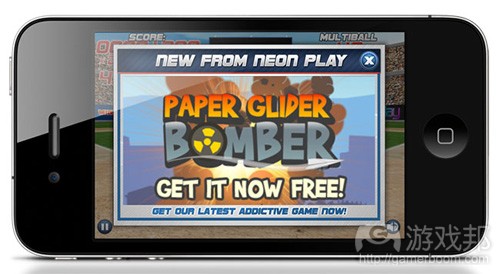开发者应巧用“原生广告”转化用户
作者:Justin Mauldin
2013年应用开发者最纠结的莫过于盈利问题。这个行业逐年发展,但自应用商店问世以来却鲜有重大变化。在免费模式当道之前,应用经历了包括付费、奖励安装和订阅等多种不同的盈利模式。
顾名思义,免费模式就是开发者免费发布应用的盈利模式,但它并非当今最成功的盈利手段。在iOS收益前50名应用榜单中,有38款应用选择免费模式,仅有8款非游戏应用选择订阅模式(游戏邦注:例如纽约时报、职业棒球大联盟等),有4款游戏采用传统付费模式。在Android平台收益前50名应用榜单中,有48款均为免费游戏,仅有一者是订阅模式的游戏,另一款为硕果仅存的付费游戏。
那么,免费游戏能够长踞收益榜单前列?这些游戏是通过虚拟货币和虚拟商品交易而实现收益。
任何盈利模式的最困难之处就在于将用户转化为付费用户。应用内置广告服务NativeX发现,在多数游戏中,仅有5%的玩家会购买IAP内容。那么开发者应如何转化剩下的95%玩家?此时广告就开始介入了。
不幸的是,游戏内置广告的一个问题就在于,它们大多质量堪忧,效果不佳。相信不少人都曾遇到应用不断弹出提示,让你购买更多钱币,或者购买一些你并不需要的东西等情况。移动广告网站则因向用户发送垃圾信息、推送通知广告,以及呈现在主界面的图标而恶化了这一情况。这也难怪用户和开发者都无法再忍受广告了。
我认为如何执行得当,用户还是有可能接受,在特定情况在甚至还可能喜欢上广告。但“执行得当”在这里的定义是什么?以下就是我们的理解:
1)避免使用垃圾广告网络。带有推送通知的高点击率毫无意义,因为长期来看应用卸载率也会随之增长。多数用户一发现某款不明来源的应用下载图标时,就会果断将其移除。用户愿意为免费内容而忍受游戏内置广告,但那些呈现在游戏之外的广告就越过了其忍耐的界线。谷歌在去年就禁止了应用内的干扰性广告。
2)要将关联性作为切入点。向青少年兜售壮阳药,而向90多岁的老人推荐徒步旅行项目无疑是不合适的。不幸的是,这正是当前许多平庸的移动广告网站的做法。它们并没有弄清楚自己的目标用户是谁,他们的喜好,以及他们会喜欢的应用类型。但移动广告行业正在逐渐发展。例如,NativeX等广告网络最近就推出了有助于广告商锁定用户年龄、性别、收入、教育、民族等特点的服务,以便广告主向正确的用户群体投放广告。
3)拓展你的广告网络。网络平台的原生广告最近的发展如日中天。Hubspot、《华尔街日报》、《纽约时报》等发行商都整合了原生广告,其点击率增加了200%至300%左右。用户浏览原生广告的意愿也比传统展示性广告高53%。尽管原生广告是2013年的新营销热词,但还是有许多对其概念感到困惑。Altimeter Group的数字广告和媒体分析师Rebecca Lieb对此定义是:
“原生广告介于内容营销和平常的旧式广告(具有干扰性)之间。其定义是为空间或时间付费。而“原生”则意味着它是自然的,有利于用户体验,非推销性质,并且其本身就会提供一定价值(例如娱乐、教育或功能等)的广告。”
那么,移动平台上的原生广告应该是怎样的?发行商如何借此创造价值?举例来说,将游戏角色引进广告,就可以削弱其中的广告意味,用户将更愿意积极回应广告。如果游戏角色此时开口对玩家说出广告台词效果也许会更好。
开发者对广告怀着又爱又恨的复杂感情。他们喜欢广告所带来的收益,但痛恨它们对用户体验造成的恶劣影响。通过清除垃圾信息的植入方式,瞄准目标用户,并不断提升广告体验,开发者终会找到“双赢”模式。也许还是有些人不相信,剩下的95%用户仍然还有不少盈利空间,关键在于开发者是否用心思考盈利策略。(本文为游戏邦/gamerboom.com编译,拒绝任何不保留版权的转载,如需转载请联系:游戏邦)
Know your audience: 95% are freeloaders
Justin Mauldin
This sponsored post is produced by NativeX.
It’s no surprise that the biggest struggle for app developers in 2013 is monetization. The industry evolves year by year, but little has changed since the app stores launched. Apps have flirted
with different monetization models (premium, paywall, and subscription) before finally settling on freemium.
As the name suggests, freemium is a model wherein developers give away their app for free, and it’s far and away the most successful these days. Thirty-eight of the 50 Top Grossing apps on iOS use the freemium model, compared to 8 nongame subscription models (the New York Times, Major League Baseball, and such), and four conventionally purchased games. On Android, 48 of the 50 Top Grossing are freemium games, with one subscription-based game and an equally lonesome premium game.
So, how can freemium games so reliably top the grossing charts? These games bring in revenue through a combination of payments for virtual currency and goods.
The most difficult part of any monetization model is getting people to convert to paying customers. At NativeX, a leader in native in-app advertising, we’ve seen that in most games only 5 percent of players will ever make an in-app purchase. How do developers monetize the remaining 95 percent? That’s where ads come in.
Unfortunately, the problem with in-game advertising is that most of it is genuinely bad. We’ve all experienced an app that constantly prompts you to buy more coins, run a credit check, or buy something you don’t need. Mobile ad networks make the problem worse by finding new ways to spam users with push notification ads and icons plaguing the home screen. It’s no wonder consumers and developers are fed up with ads!
I suggest that when done correctly, consumers are willing to tolerate—and in some cases even enjoy—advertisements. But what does “correctly” mean? Here’s our take:
1) Avoid spammy networks. High click-through rates with push notifications are meaningless, as app uninstall rates will also shoot up in the long run. Most consumers will immediately remove the offending app once they’ve notice its icon undergoing download. Consumers are willing to tolerate in-game ads for free content, but ads that start showing up outside of the game are crossing the line. Google agrees; late last year the company banned intrusive advertisements.
2) It starts with relevance. Showing Viagra pills to a teenager and hiking expeditions to a 90 year old is stupid. Unfortunately, that’s how sophisticated today’s average mobile ad network is.
They have no idea who that user is, what they’re into, and which types of apps they enjoy. Yet the mobile advertising industry is slowly evolving. For example, NativeX recently announced new demographic targeting giving advertisers the capability to advertise through specific apps based on the demographic they are known to attract: age, gender, income, education, ethnicity, and so on.
With NativeX, advertisers can put their ads in front of the right audience.
Despite the depth of insights provided by NativeX, the technology is built on anonymous self-reported surveys that compile information on a given game’s audience. Moreover, Native X never collects or shares personally identifiable information.
3) Evolve your advertising. Native advertising on the web is all the rage these days. Publishers like Hubspot, the Wall Street Journal, and the New York Times have all integrated native advertising and seen CTRs increase by 200 percent to 300 percent as a result. Consumers are also 53 percent more likely to view native advertising than traditional display ads. As the new marketing buzzword of 2013, there is a lot of confusion as to what native advertising actually means. Rebecca Lieb, a digital advertising and media analyst at Altimeter Group, sums it up:
“Native advertising lies somewhere in bridging the divide between content marketing (a pull strategy) and plain, old-fashioned advertising, which is interruptive. Somewhere in its definition is probably the fact of paying for space or time (the “advertising” part). The “native” part means it is organic, conducive to the user experience, non-salesy, and offers some sort of value in and of itself as an ad (entertainment, education, or utility, for example).”
But what does native advertising look like in mobile? How can publishers create value with scale? Here are a couple successful examples:
NativeX 1
Initial tests with Deal or No Deal have shown consumers click 54 percent more and iWin earned 511 percent more.
NativeX 2
Initial tests with Battle Bears Gold have shown consumers click 378 percent more and SkyVu earned 2,157 percent more.
When in-game characters are brought into the advertisement, it ceases to feel like an ad. The positive response to these campaigns offers a glimpse into native advertising’s potential. Imagine
when in-game characters begin speaking audio ads to the user?
Developers have always had a love/hate relationship with advertising. They love the dollars it brings in but hate the experience it creates for the user. By steering clear of spammy implementations, targeting your demographic, and evolving the ad experience, developers can find the illusory “win-win.” While some may not be convinced, there remains a lot of money for those willing to think strategically about monetizing the 95 percent.(source:venturebeat)








































 闽公网安备35020302001549号
闽公网安备35020302001549号